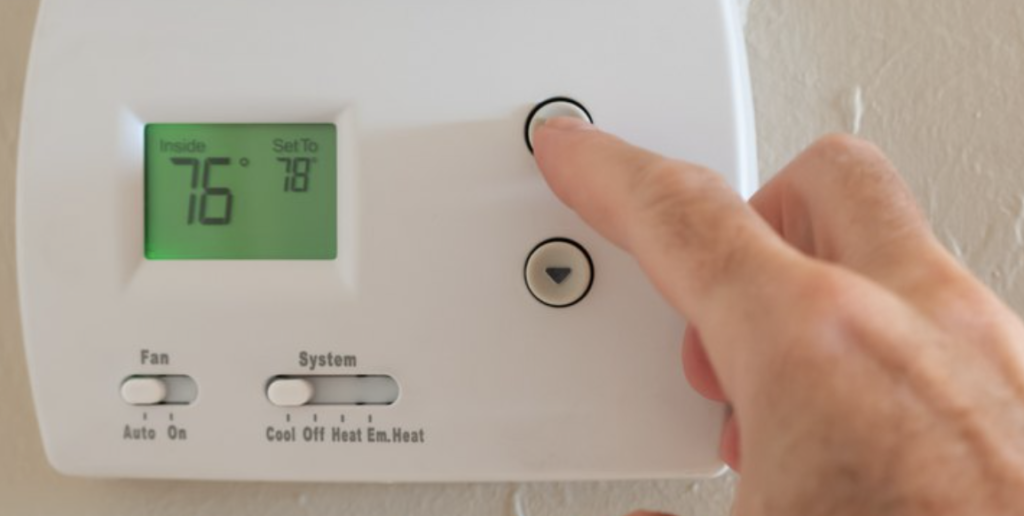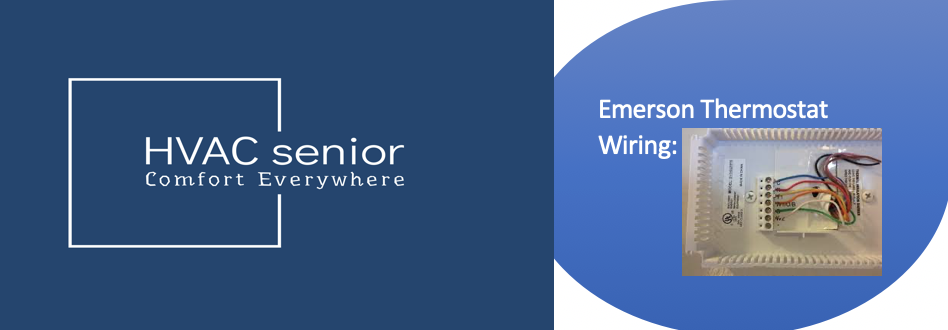Thermostat Not Reaching Set Temperature? Find out why and fix it.
The idea behind a thermostat appears simple: after setting a desired temperature, your furnace or air conditioner should work persistently to achieve it. In theory, the procedure is easy. But in reality, many homeowners frequently experience the annoying problem of the Thermostat Not Reaching Set Temperature.
There are several ways that this widespread issue presents itself:
- “Why does my thermostat not match my home’s temperature?”
- “Why is the digital thermostat reading higher than the setting?” This issue primarily plagues AC thermostat settings, especially in cooling mode.
- “My AC can’t reach the set temperature. What’s going wrong?”
- “The furnace isn’t reaching the set temperature. Am I overlooking something?” This dilemma predominantly concerns furnace thermostat settings for heating. Undoubtedly, if your thermostat setting doesn’t align with your home’s actual temperature, you have a predicament on your hands.
Six often occurring causes of your thermostat not reaching the desired temperature will be covered in this discussion.
At a glance: Thermometer Is Not Calibrated Correctly (Just Recalibrate It),Dirty Thermostat Heating Up,Thermostat Is Old, Broken, Or Misaligned,Incorrect Or Loose Thermostat Wiring Causing A Higher Or Lower Than Thermostat Temperature,New Thermostat Is Exposed to The Sun, Heating Source and AC Or Furnace Is Too Small.
Related Article>>>>>Thermostat Says Heat On But No Heat.
The majority of these elements, which cover both cooling and heating scenarios, are applicable to both furnaces and air conditioners.
There are just two possible causes of these differences:
- Thermostat issues: This category includes problems related to the thermostat itself, such as wiring complications.
- AC or furnace issues: Here, the root cause lies within your HVAC (Heating, Ventilation, and Air Conditioning) unit, indicating a malfunction or inefficiency.
The secret is to meticulously look into each of these potential causes and rule them out one at a time if you find yourself struggling with the annoyance of your furnace or AC failing to reach the proper set temperature.
You can move forward with the problem’s successful resolution once you identify the real offender who is in charge of the set temperature not being reached.
It’s important to keep in mind that some of these factors are trickier to fix than others; for example, replacing a faulty AC unit requires more effort than adjusting the thermostat.
Let’s delve into the factors that could be hindering your thermostat from reaching the set temperature.

Why my Thermostat Not Reaching Set Temperature?
As previously discussed, when you encounter a situation where the thermostat is not reaching the set temperature, the source of the problem can be traced back to one of two primary culprits:
Thermostat: The thermostat itself is the first possible offender to take into account. In the blazing summer, for example, if your thermostat suggests a higher temperature than you prefer, it often means that your air conditioner is having trouble maintaining the desired temperature.
Similar to this, if your furnace cannot reach the desired temperature during the winter, either the thermostat or the furnace may be at fault.
Let’s now go over all of the potential causes of this temperature difference, starting with any potential thermostat-related problems.
We’ll then investigate whether the furnace or air conditioner may be a factor in the problem of the thermostat not reaching the desired temperature.
1.Thermometer Is Not Calibrated Correctly (Just Recalibrate It).
Without exception, every thermostat needs to be calibrated correctly. An improperly calibrated thermostat is often to blame for noticeable temperature differences between the programmed temperature and the actual indoor temperature.
Take the case where your thermostat is set to a cozy 74 degrees Fahrenheit. However, a different thermometer you use to verify the indoor temperature reads a warmer 78°F.
The 78°F value in this case is probably being misread by your thermostat as 74°F, resulting in a 4°F divergence.
Under specific conditions, incorrect thermostat calibration is more likely to happen:
- New Thermostat: If you’ve recently installed a new thermostat, it’s essential to ensure it’s calibrated correctly. Failure to do so may lead to the temperature disparity issue.
- Power Outages: Following a power outage, your thermostat may revert to default calibration settings, necessitating recalibration.
- Digital Thermostats: Even with older AC units or furnaces, digital thermostats can sometimes misinterpret temperature settings, especially if they are reading a higher temperature than the desired set temperature. In such cases, recalibration is vital.
Fixes.
The solution to this issue is relatively straightforward: recalibrate the thermostat to accurately measure the temperature.
Here’s a step-by-step guide on how to recalibrate your thermostat effectively:
- Measure Room Temperature: Use a separate thermometer to gauge the room temperature near the thermostat.
- Note Temperature Difference: Take note of the temperature difference between the separate thermometer reading and the thermostat’s display. For example, if the thermometer reads 80°F, while the thermostat setting is 76°F, you have a 4-degree deviation.
- Recalibrate: Adjust the thermostat by the measured temperature difference. Resources are available to guide you through the calibration process, especially for programmable thermostats.
Once your thermostat is accurately recalibrated, you should observe that the home temperature aligns precisely with the thermostat setting or deviates by only 1 or 2 degrees.
If, however, this calibration issue isn’t the cause preventing the thermostat from reaching the set temperature, it’s advisable to explore further along this list of potential factors.
Also read>>>Thermostat Turned Off But Still Blowing Air.
2. Dirty Thermostat Heating Up (Leading To Incorrect Temperature Reading).
Unexpectedly simple, collected dirt inside the thermostat unit is another possible cause for the thermostat not reaching the desired temperature.
A thermostat can accumulate dust, hair, and other debris over time, just like any other home appliance. The inside parts of the thermostat are frequently cleaned as part of an annual HVAC maintenance plan for precisely this reason.
Your thermostat may produce too much heat if its wiring and sensors become dusty and are covered in grime. Temperature readings may be off due to this excess heat. As a result, the temperature on your thermostat is out of sync with the one inside your home.
Fixes.
It’s delightfully easy to fix this problem: just clean the thermostat. It is one of the simplest fixes for a thermostat that won’t reach the desired temperature.
Here is a step-by-step instruction sheet to help you reset your thermostat:
- Remove the Faceplate: Carefully take off the faceplate of the thermostat.
- Gentle Cleaning: Utilize a soft toothbrush to delicately clean the thermostat’s interior components. Pay special attention to the sensors, ensuring they are thoroughly cleaned.
After cleaning your thermostat of dust and filth, you should notice that the temperature is once again accurately detected by the thermostat sensors, bringing the thermostat setting back in line with the temperature of your home.
3. Thermostat Is Old, Broken, Or Misaligned.
When it comes to thermostats, every new unit should ideally match the home’s temperature with remarkable precision, typically within a deviation of 1 or 2 degrees.
However, as thermostats age, they may begin to misread the correct temperature, offering three plausible explanations for why the thermostat set temperature isn’t being achieved:
- Age-Related Wear and Tear: Over time, even mild wear-and-tear can take a toll on a thermostat. Components such as wires and sensors can deteriorate, causing the thermostat to function less efficiently than it did in its earlier years.
- Thermostat Breakdown: Like any mechanical or electronic device, individual components within the thermostat can degrade over time. This breakdown can result in the thermostat failing to meet the set temperature.
- Misalignment: Proper thermostat placement is crucial. Ideally, a thermostat should be securely attached close to the wall in a perfectly horizontal position. However, over the years, it’s possible for the thermostat to detach from the wall or become slightly uneven, disrupting its optimal horizontal alignment. Any of these situations can lead to thermostat issues, causing it to fall short of meeting the set temperature reliably.
Fixes.
The solutions to these issues vary:
- Old Thermostat: An aging thermostat typically needs to be replaced. The years of use can render it less effective. This is a task best handled by an HVAC professional.
- Broken Thermostat: Repairing a broken thermostat can be challenging, and often, it’s more practical to replace it with a new one.
- Misaligned Thermostat: You can attempt to realign the thermostat yourself. This may help resolve the temperature anomaly issue, and it’s a relatively straightforward DIY task.
After cleaning your thermostat of dust and filth, you should notice that the temperature is once again accurately detected by the thermostat sensors, bringing the thermostat setting back in line with the temperature of your home.
Also read>>>>Thermostat Clicks But Furnace Doesn’t Turn On.
4. Incorrect Or Loose Thermostat Wiring Causing A Higher Or Lower Than Thermostat Temperature.
A properly wired thermostat is unquestionably required, with each wire securely attached in its intended location. The material is filled with detailed instructions for wiring any thermostat.
Incorrect wiring is usually at blame when a newly wired thermostat doesn’t achieve the desired temperature.
Homeowners become frustrated by temperature variations brought on by a poorly wired thermostat. Thermostat devices, both new and old, may suffer from this wiring problem.
While older thermostats’ wire connections may have become loose over time, new installations may have had improperly secured wires.
Fixes.
The solution to this problem is twofold:
- Check Wiring Correctness: Begin by verifying if the thermostat is wired correctly. The resource mentioned earlier can serve as a valuable guide to ensure that each wire is correctly placed in its respective socket.
- Inspect Wire Connections: Examine all wire connections to ensure they are securely fixed in their sockets. If you notice a wire not fully inserted into the socket (the end of the wire should be entirely within the socket), simply unscrew the socket, reposition the wire correctly, and then securely screw the socket back into place.
You should see a resolution to problems like a digital thermostat reading higher or lower than the specified temperature by fixing these wiring faults.
With these actions, your indoor temperature should return to the proper setting, such as the anticipated 75°F, and you should see the thermostat display and a different thermometer reading match once more.
5. New Thermostat Is Exposed to The Sun, Heating Source, Etc.
The location of your thermostat inside your house is quite important. For example, if it’s located immediately above a heat source or is exposed to direct sunshine, the temperature near the thermostat may be much higher than in other parts of your house.
It’s important to realize that thermostat calibration takes temperature changes into account.
Rapid and frequent temperature variations are the real issue, as they may prevent the thermostat from accurately reading the temperature.
Think of this illustration: Consider that you calibrated your thermostat on an overcast day, but it is now mounted on a wall that receives direct sunlight.
When you turn on the air conditioner on a sunny day, it can have a hard time getting to the desired temperature since the sun’s heat will cause the thermostat to misread the temperature inside.
The best thermostat placement is crucial for avoiding this problem.
Avoid areas susceptible to natural temperature changes, such as those close to windows, in the kitchen, or adjacent to doors, as well as spaces near heating sources like fireplaces or space heaters.
Fixes.
The solution depends on your existing setup:
- Relocation Challenge: If your thermostat is already installed in a spot with significant temperature variations, relocating it can be a daunting task. It involves moving all the wires, which is complex and typically requires professional assistance.
- Adjusting Set Temperatures: In many cases, the most practical approach is to retain the thermostat’s current location. While this might seem counterintuitive, repositioning a thermostat is a costly endeavor. Instead, homeowners can adapt by lowering the thermostat temperature setting in the summer (e.g., setting it to 70°F for a desired 74°F) and raising it in the winter (e.g., setting it to 76°F for a desired 72°F).
While not an ideal solution, this approach allows homeowners to gain control over indoor temperatures even when dealing with an improperly placed thermostat.
6. AC Or Furnace Is Too Small (Undersized HVAC System).
It is an evident fact that having an HVAC unit of the proper size is necessary to maintain the ideal set temperature.
This essential requirement is frequently the cause of the thermostat not reaching the desired temperature.
The unit will run at maximum capacity but still struggle to produce enough cooling or heating output to reach the desired temperature if your home has an air conditioner or furnace that is inadequate for its heating or cooling requirements.
Suppose the following: You live in a house that needs a 3-ton air conditioner, but you only have a 2-ton one.
The thermostat has been carefully calibrated to a cozy 72°F. But it quickly becomes clear that a smaller AC unit won’t be able to efficiently chill your house to the target 72°F.
Despite the fact that your thermostat is set to 72°F, a thermometer may read 76°F, which is less comfortable.
In situations involving heating, this problem is also present. Your furnace simply won’t be able to warm your home to the desired set temperature if your home requires a 4-ton furnace yet it can only produce 2.5 tons of heating output.
You can consult resources that assist you in calculating the ideal size for your air conditioner or furnace to ascertain whether your HVAC device is undersized.
The thermostat probably isn’t reaching the desired temperature because of under sizing if the computed tonnage differs noticeably from the tonnage of your installed HVAC unit.
But the answer is more complicated than just switching to a bigger furnace or air conditioner:
Fixes.
- Keep Existing HVAC Unit: Opting for a full replacement with a larger unit can be impractical and costly.
- Supplement with Smaller Units: Instead, you can complement your existing HVAC unit by introducing a smaller unit. For example, if you need a 3-ton AC but currently have a 2-ton AC, you can acquire an additional, smaller 1-ton AC unit (equivalent to 12,000 BTU). Options such as mini splits, window units, or portable air conditioners are available.
- For Furnaces: If your furnace is undersized, consider adding one or a couple of space heaters. Each 1,500W space heater provides approximately 5,200 BTU of heating output. These heaters can serve as supplementary heating sources to compensate for the shortfall in warmth from the undersized furnace, helping you reach the desired thermostat temperature setting.
Addressing the issue of an undersized HVAC unit in this manner allows homeowners to effectively manage indoor temperatures, even when faced with the challenge of a thermostat not reaching the set temperature.
Frequently Asked Questions (FAQs).
Why is my thermostat not reaching the set temperature, and what could be causing this issue?
Answer: When your thermostat doesn’t reach the set temperature, several factors could be at play. It might be due to thermostat calibration problems, improper wiring, dirt accumulation, or thermostat misalignment. Alternatively, an undersized HVAC unit can also hinder temperature control.
How can I recalibrate my thermostat if it’s not reading the correct temperature?
Answer: Recalibrating your thermostat is a relatively straightforward process. Begin by measuring the room temperature with a separate thermometer and noting the difference from the thermostat reading.
Then, adjust the thermostat to offset the measured temperature difference, ensuring it’s correctly calibrated.
What should I do if my thermostat is improperly placed in my home, leading to temperature discrepancies?
Answer: Correct thermostat placement is crucial. If your thermostat is in a location with extreme temperature variations, relocating it can be challenging and costly.
As an alternative, consider adjusting the thermostat temperature setting manually, lowering it in the summer and raising it in the winter to compensate for the unfavorable placement.
Is it essential to have an HVAC unit that matches the size of my home for my thermostat to work correctly?
Answer: Yes, having an HVAC unit appropriately sized for your home is crucial. An undersized unit will run at maximum capacity but struggle to reach the set temperature, resulting in temperature disparities.
To address this issue, you can complement your existing HVAC unit with smaller units or supplemental heating sources.
Can I fix the thermostat issue by simply upgrading to a larger AC or furnace unit?
Answer: While upgrading to a larger AC or furnace unit may seem like a solution, it’s often impractical and expensive.
Instead, consider keeping your existing HVAC unit and introducing smaller units or supplemental heaters to address temperature disparities effectively without the need for a full replacement.
Conclusion.
It is impossible to emphasize the importance of the thermostat in ensuring indoor comfort, yet a number of things can prevent it from achieving the desired temperature.
These thermostat-related concerns, ranging from calibration and wiring faults to dirt buildup and misalignment, are controllable with careful attention and do-it-yourself fixes.
Furthermore, it’s important to not overlook the size of the HVAC unit. Temperature discrepancies that persist can be caused by an inadequate unit.
Upgrades to larger units are frequently impractical, but there are inventive methods to fill the gap, such adding smaller units or space heaters.
Homeowners can restore control over their indoor environment by overcoming five thermostat obstacles, assuring comfort all year long.









